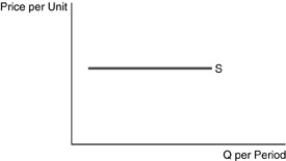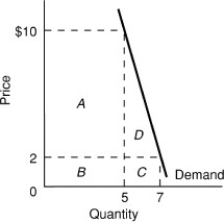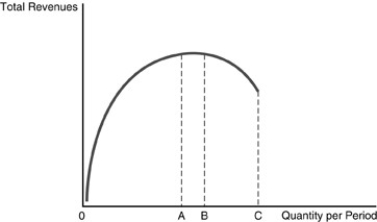A) zero.
B) negative.
C) positive.
D) between -1 and +1.
Correct Answer

verified
Correct Answer
verified
Multiple Choice
 -In the above table, the cross price elasticity of demand for good Z with good Y when PY rises from $15 to $18 is
-In the above table, the cross price elasticity of demand for good Z with good Y when PY rises from $15 to $18 is
A) -2.20.
B) +2.20.
C) +1.10.
D) -1.10.
Correct Answer

verified
Correct Answer
verified
Multiple Choice
 -The most important determinant of price elasticity of supply is
-The most important determinant of price elasticity of supply is
A) the number of close substitutes there are for the good.
B) the time period firms have to adjust to the new price.
C) the price of the good.
D) the importance of the good in the budgets of consumers.
Correct Answer

verified
Correct Answer
verified
Multiple Choice
The cross price elasticity of demand is measured by the
A) percentage change in the quantity demanded of one good divided by the percentage change in quantity demanded of another good.
B) percentage change in the price of one good divided by the percentage change in price of another good.
C) percentage change in the demand for one good divided by the percentage change in price of another good.
D) percentage change in the price of one good divided by the percentage change in the demand for another good.
Correct Answer

verified
Correct Answer
verified
Multiple Choice
 -Use the above figure. When the price increases from $2 to $10, total revenue
-Use the above figure. When the price increases from $2 to $10, total revenue
A) increases from areas A + B to areas B + C and demand is inelastic.
B) increases from areas B + C to areas A + B and demand is inelastic.
C) increases from areas B + C to areas A + D and demand is elastic.
D) increases from areas C + D to areas B + A and demand is elastic.
Correct Answer

verified
Correct Answer
verified
Multiple Choice
When total revenue and price are directly related, demand is
A) unit-elastic.
B) inelastic.
C) elastic.
D) not related.
Correct Answer

verified
Correct Answer
verified
Multiple Choice
When price is $5 per unit, quantity demanded is 12 units. When price is $6 per unit, quantity demanded is 8 units. The value of the absolute price elasticity of demand is approximately
A) 2.20.
B) 4.00.
C) 1.82.
D) 0.36.
Correct Answer

verified
Correct Answer
verified
Multiple Choice
The price elasticity of demand is a measure of
A) the responsiveness of the quantity demanded of a good to a changes in the price of the good.
B) the quantity demanded of a good at a given price.
C) the demand for a product holding prices constant.
D) the horizontal shift in the demand curve when the price of a good changes.
Correct Answer

verified
Correct Answer
verified
Multiple Choice
A demand relationship that is a vertical line up from the quantity axis is
A) perfectly elastic.
B) unit-elastic.
C) perfectly inelastic.
D) somewhat elastic.
Correct Answer

verified
Correct Answer
verified
Multiple Choice
 -Which of the following is a determinant of the price elasticity of demand for a product? I. The existence of substitute goods
II. The percentage of a consumer's total budget devoted to purchases of that commodity
-Which of the following is a determinant of the price elasticity of demand for a product? I. The existence of substitute goods
II. The percentage of a consumer's total budget devoted to purchases of that commodity
A) I only
B) II only
C) Both I and II
D) Neither I nor II
Correct Answer

verified
Correct Answer
verified
Multiple Choice
Suppose 1000 units of a good are sold at $10 a unit. If price increases to $15 and total revenue increases to $15,000 and increases by $1000 for every dollar increase in price after that, we know that
A) demand is perfectly elastic.
B) the demand curve is vertical.
C) the demand curve is downward sloping and the firm is on the inelastic portion of the demand curve.
D) the demand curve is a rectangular hyperbola.
Correct Answer

verified
Correct Answer
verified
Multiple Choice
A value of the absolute price elasticity of demand equal to 0.6 indicates that
A) a 6 percent increase in price leads to a 10 percent decrease in quantity demanded.
B) a 10 percent increase in price leads to a 6 percent decrease in quantity demanded.
C) a 0.6 percent increase in price leads to a 1 percent decrease in quantity demanded.
D) a 1 percent increase in price leads to a 6 percent decrease in quantity demanded.
Correct Answer

verified
Correct Answer
verified
Multiple Choice
If your income rises by 25 percent and, as a result, you buy fewer packages of Ramen Noodles, then Ramen Noodles are a(n)
A) substitute.
B) normal good.
C) complement.
D) inferior good.
Correct Answer

verified
Correct Answer
verified
Showing 401 - 413 of 413
Related Exams